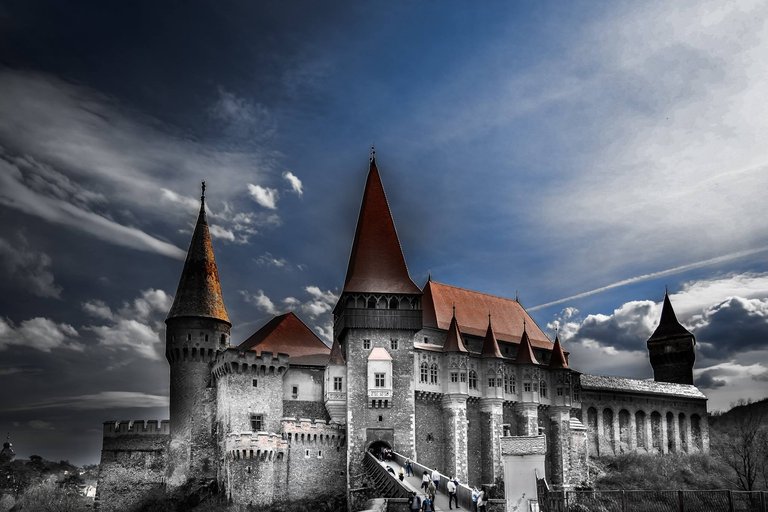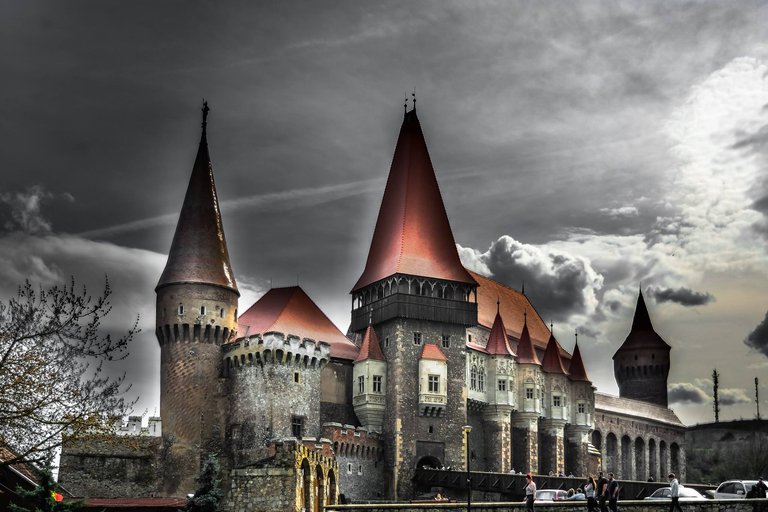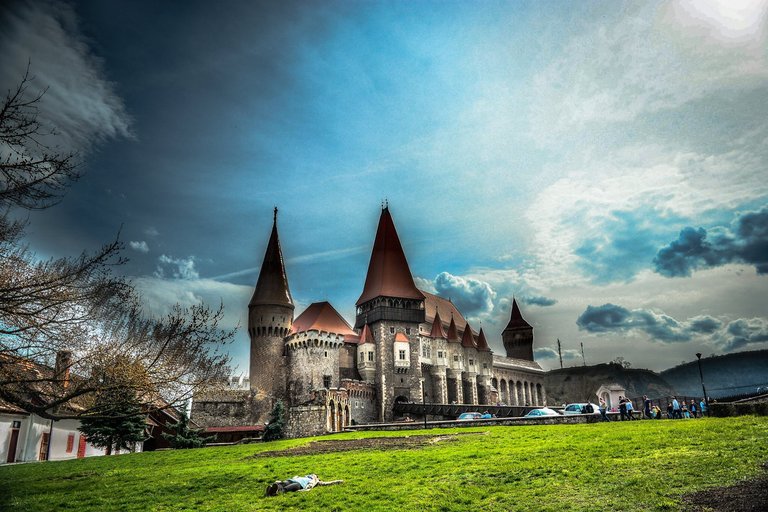The Corvinus Castle has kept horrifying legends and one of those who made it known throughout the world reminds of the imprisonment of voivode Vlad the Impaler for seven years in a cellar of the historical monument. Even if the story is not true, historians say, it has brought notoriety to the city of Hunedoara from Romania.
Two of the legends are:
Legend of the raven
On the Corvinus family coat of arms (derived from the Latin "Corvus", which means "Corb") is inscribed a raven that holds the golden beak in its beak. Assigning this family symbol is a legend. It is said that John of Hunedoara was an illegitimate son of Sigismund of Luxembourg, the king of Hungary, with a beautiful woman from the Country of Haţeg, named Elisabeth.
To protect himself from the dishonesty, the king gives the husband one of his brave men, Voicu, giving him a ring as a gift to the unborn child, in order to be recognized when he grows up and goes to the royal. During a voyage made by Voicu's family, leaving for a wedding, the gears are forgotten on the edge of a towel on which the meridians were placed. A raven, attracted by the brilliance of the ring, was trying to go with him. The child John of Hunedoara takes a bow and throws the raven, thus recovering the ring. When he grows up and reaches the royal court, he tells this paunch, and the King, impressed by this history, decides that the symbol of the Hunedore family
be the rag with a gold ring in the beak.
Legend of the fountain
It is said about this fountain that it was dug by three Turkish prisoners that John of Hunedoara kept in the castle. John promises the three that he will deliver them if they dig a well of good water. Prisoners, animated by the hope of deliverance, dig in the rock for 15 years and 28 meters deep can find precious water.
Only in the meantime did John die, and his wife, Elisabeth Szilagyi, decided not to respect the word given by her husband and not release the three Turks, deciding to be killed. Prisoners, as a last resort, are asking permission to write on the fountains' keys: "Water, not heart," as a reproach for the promise made and not respected.
In fact, the inscription deciphered by Mihail Guboglu reads like this: "The one who wrote it is Hassan, a prisoner of the guards in the city by the church." The ancient Arabic characters contained in the inscription date back to the mid-fifteenth century. The current position of the inscription is on one of the chapel struts.




Some information taken from the internet!
Original photos!Thank you for visiting my blog! Gabriel
Good post. The first shot I like most! Well done
🙏
Peace, Abundance, and Liberty Network (PALnet) Discord Channel. It's a completely public and open space to all members of the Steemit community who voluntarily choose to be there.Congratulations! This post has been upvoted from the communal account, @minnowsupport, by Sergiu from the Minnow Support Project. It's a witness project run by aggroed, ausbitbank, teamsteem, theprophet0, someguy123, neoxian, followbtcnews, and netuoso. The goal is to help Steemit grow by supporting Minnows. Please find us at the
If you would like to delegate to the Minnow Support Project you can do so by clicking on the following links: 50SP, 100SP, 250SP, 500SP, 1000SP, 5000SP.
Be sure to leave at least 50SP undelegated on your account.